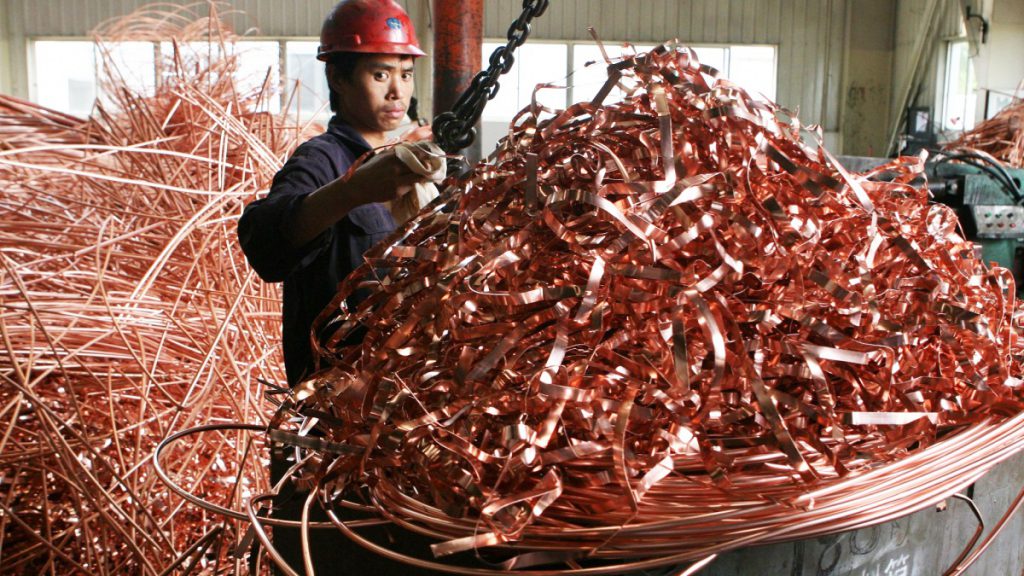Global – The non-ferrous market has stepped up to a new level of volatility in recent weeks thanks to the combination of Donald Trump’s surprise US presidential election victory, the US dollar’s appreciation and the change to India’s currency policy.
LME copper rallied from US$ 4700 to US$ 5800 per tonne in a very short space of time while lead and zinc recorded, respectively, five- and nine-year highs before undergoing corrections.
According to feedback from the Nordic Countries among others, the steep climb in copper’s value prompted many dealers to bring materials to the market, leading to an oversupply and then to copper users lowering their buying prices ‘in order to avoid being overwhelmed with material’.
In Northern Europe, it is added, delivery times of two or three months for copper materials ‘are not unusual now’. A similar message has come out of the Benelux Countries: ‘Whereas it had been easy to secure appointments at mills and foundries for most of 2016, it has become much tougher now to get the necessary delivery appointments to move the scrap units currently flowing around.’
From France, it is reported that copper factories ‘now seem to be full until February’, resulting in ‘zero demand for copper scrap’. Flows of material are said to have ‘improved slightly’ in the USA.
In Mexico, meanwhile, demand for aluminium and copper remains weak, with sales ‘requiring a lot of hard work as well as patience and with delivery appointments becoming more difficult to obtain; it would seem that high exchange prices are eroding physical demand for scrap’. Even in the export market, ‘copper scrap is becoming increasingly hard to sell’.
Demand has improved marginally in South Africa but business conditions remain ‘challenging’. The scrap prices being paid ‘are close to the export achievable price and are higher than exports in some instances’.
No decision has been taken by the authorities regarding the proposed amendments to the International Trade Administration Commission (ITAC) regulations governing overseas shipments of scrap. ‘One suggestion is to have an export tax,’ it is noted. Turning to Asia, Japanese scrap prices have risen by US$ 120-150 per ton since the second half of October in response to higher LME values and ‘raw material tightness’.
In addition, ADC12 aluminium alloy prices offered to Japan by Chinese and Russian smelters have climbed by US$ 100-120 per ton over the last two months. In China itself, refined copper consumption is forecast to grow at an average of 3.3% per annum through to 2020 as against 8.9% per year in the 2011-2015 period.
When making the same comparison, annual aluminium demand growth is expected to slow from 14% to around 5.2%. For the moment, most holders of scrap are said to be ‘cleaning out their yards at decent prices’. End users are ‘chasing additional volume’ while traders and scrap processors ‘are seeking replacement units’, it is added.
The lack of further announcements from high-ranking officials in Beijing suggests the importation of ‘wastes’ into China is set to continue. The country’s Ministry of Environmental Protection has accepted the wastes importation application for 2017 and some restrictions for the application have been cancelled.
Meanwhile, third-party inspection agencies capable of conducting pre-shipment inspections can apply to AQSIQ for permission to carry out such inspections of solid wastes which are to be imported into China for use as raw materials.
According to the revised ‘Measures on Self Inspection Scrap Suppliers by China Inspection Group’, overseas suppliers can apply to the local CCIC office for self-inspection if certain conditions and requirements are met.
Regarding the demonetisation exercise in India, meanwhile, the government’s move is a bid to tackle the issue of unaccounted cash. A significant proportion of the country’s non-ferrous scrap industry – and most notably the unorganised sector – operates on a cash basis. This is seen by some as a step towards this segment merging with the organised sector over the longer term.
This article is based on the latest Non-Ferrous World Mirror, released by the BIR recycling organisation for the benefit of its members.
Don't hesitate to contact us to share your input and ideas. Subscribe to the magazine or (free) newsletter.



